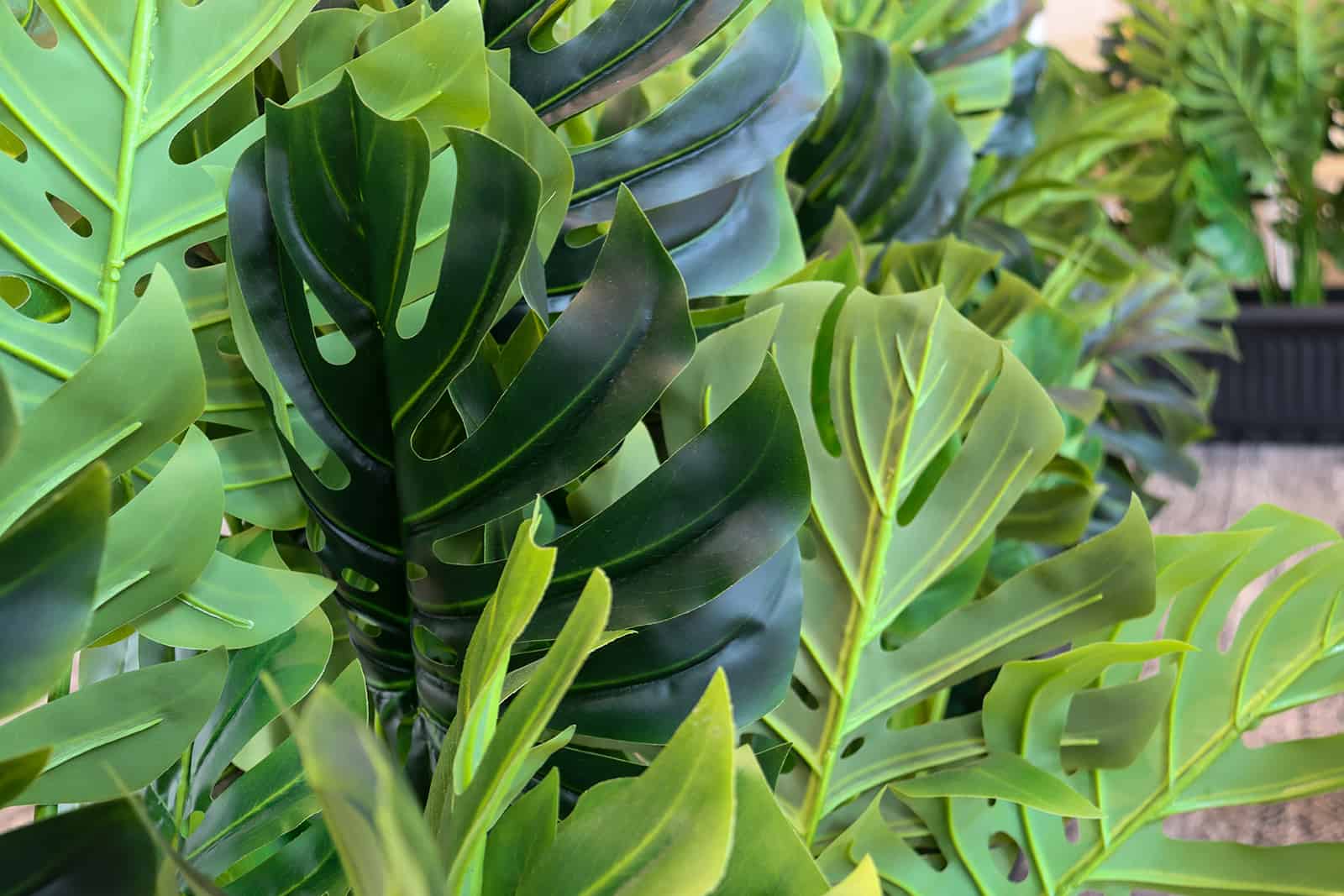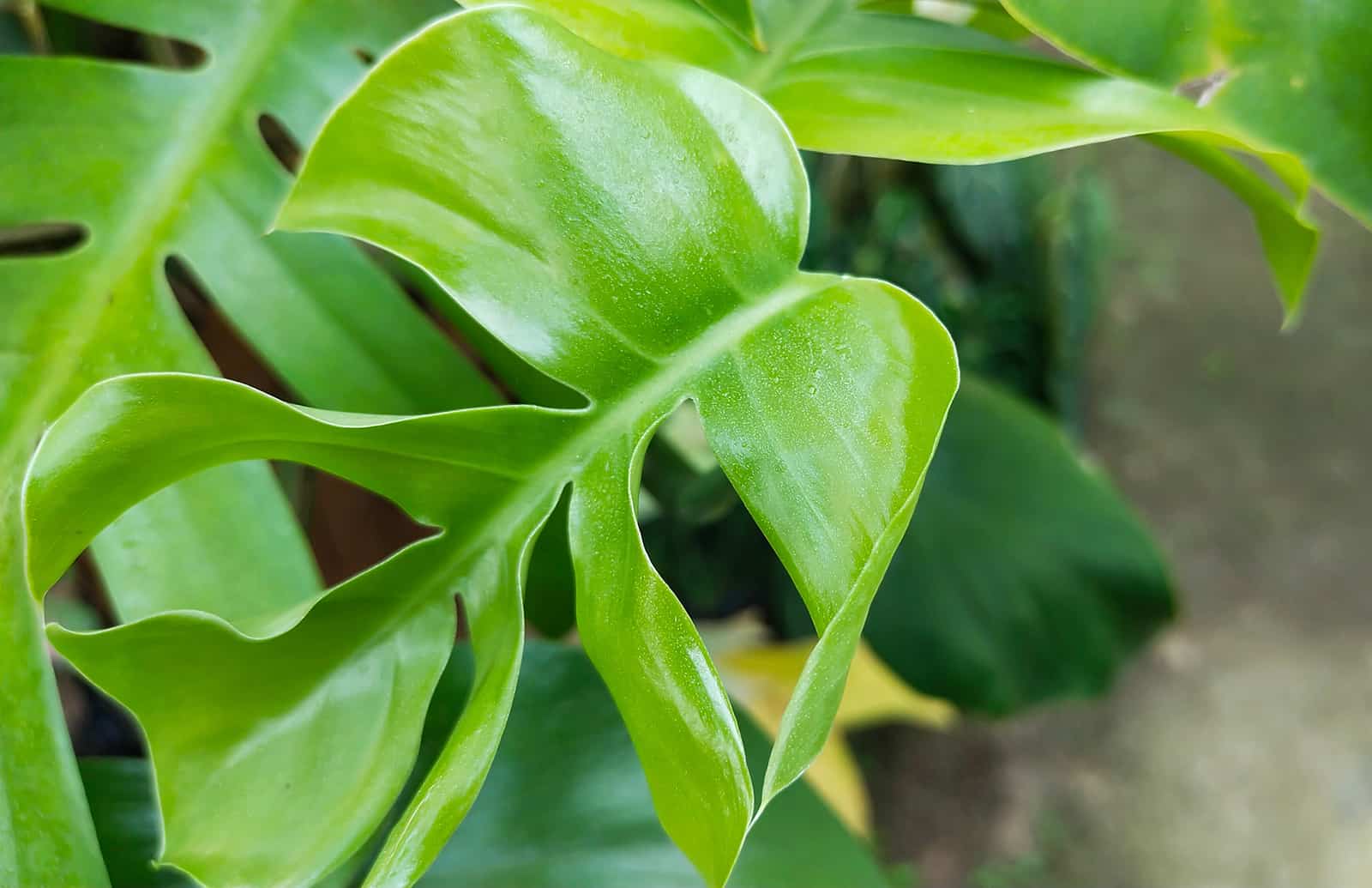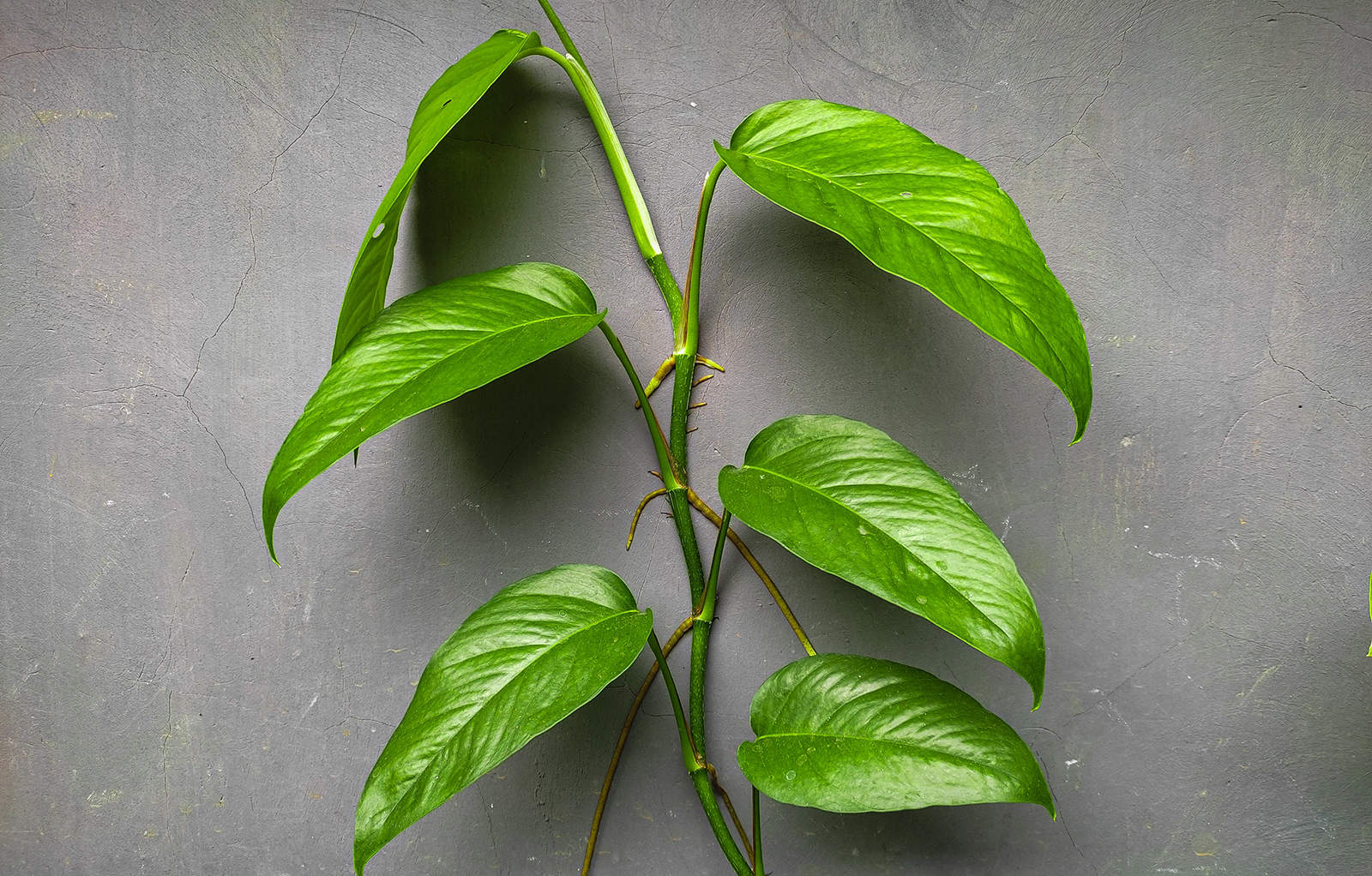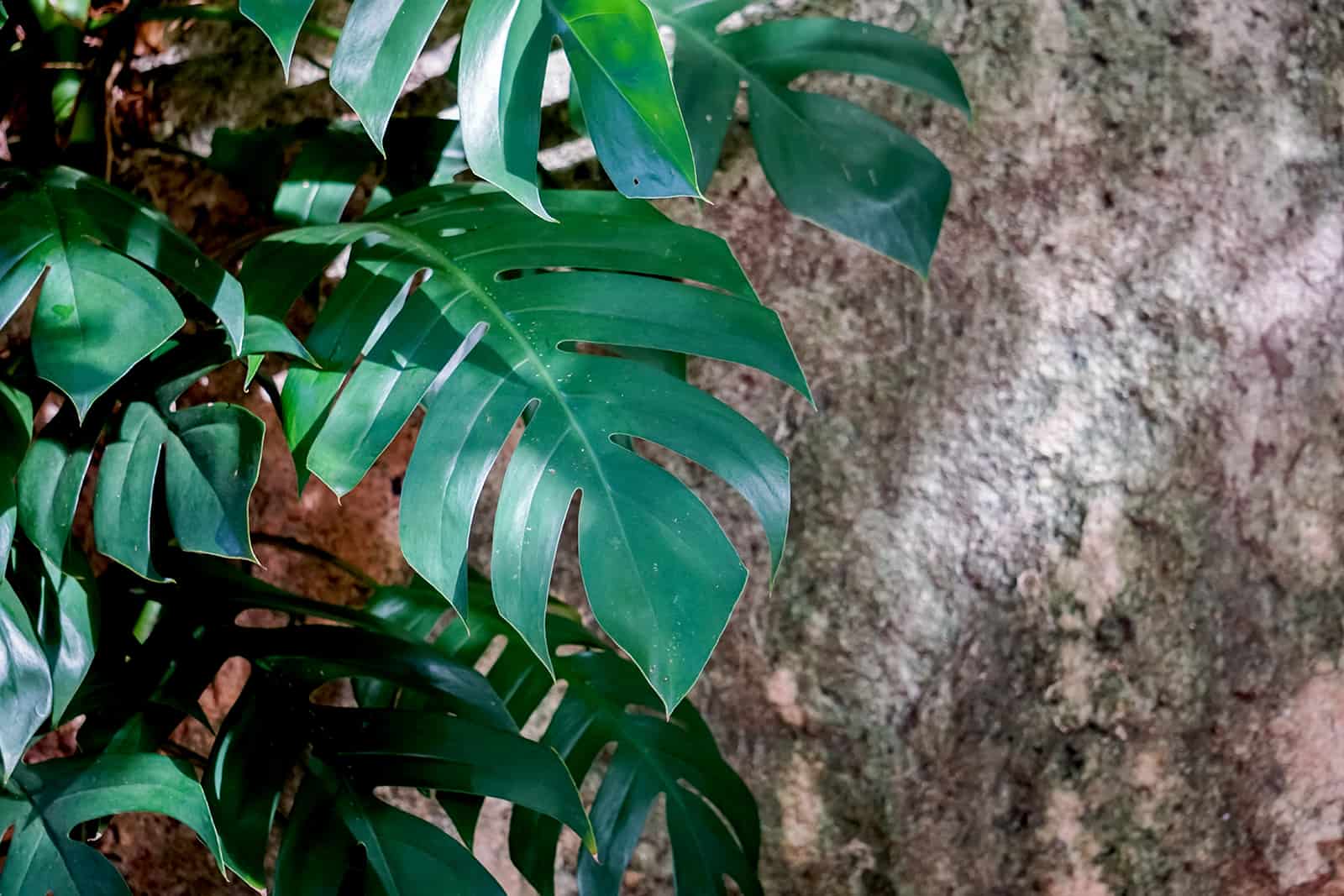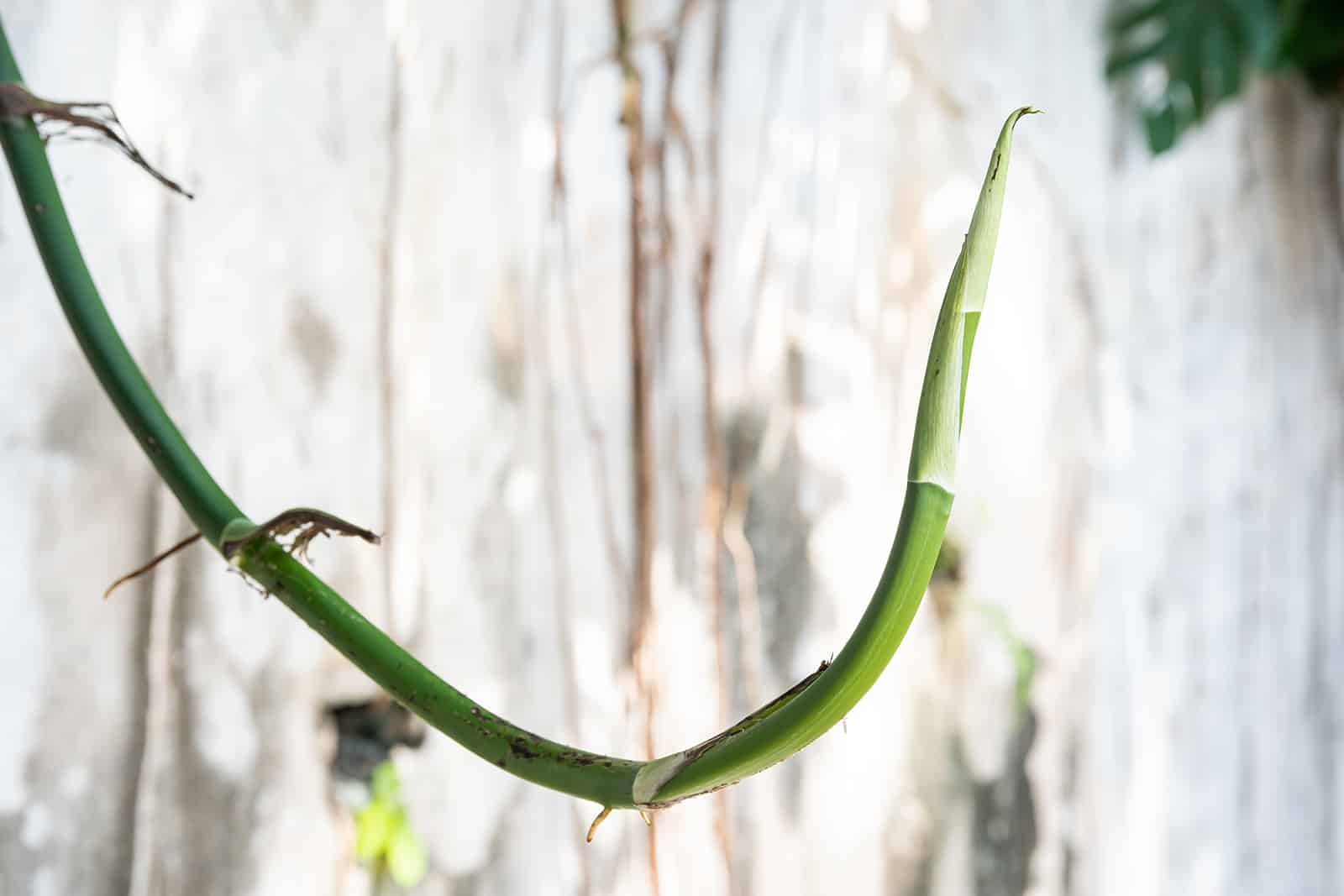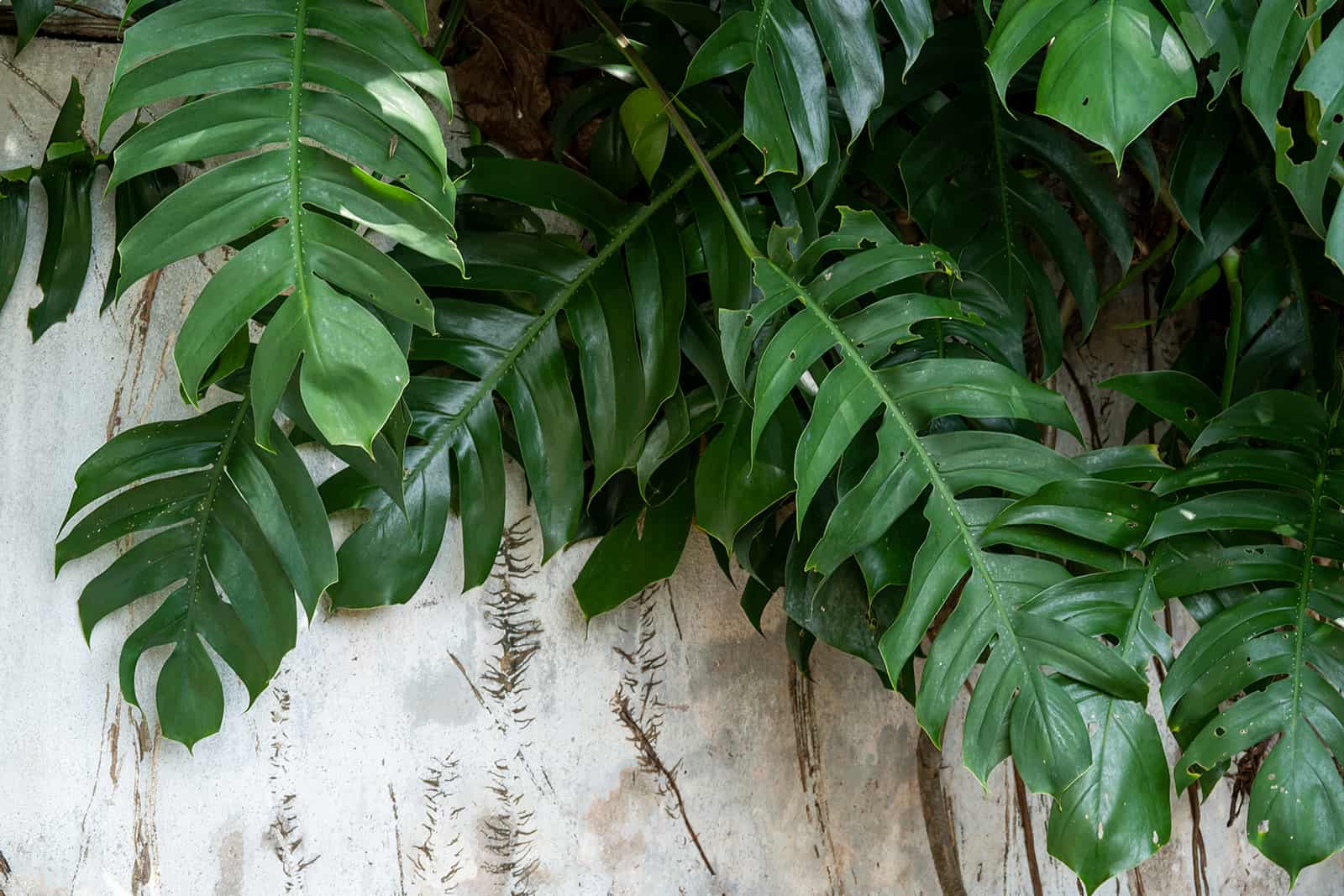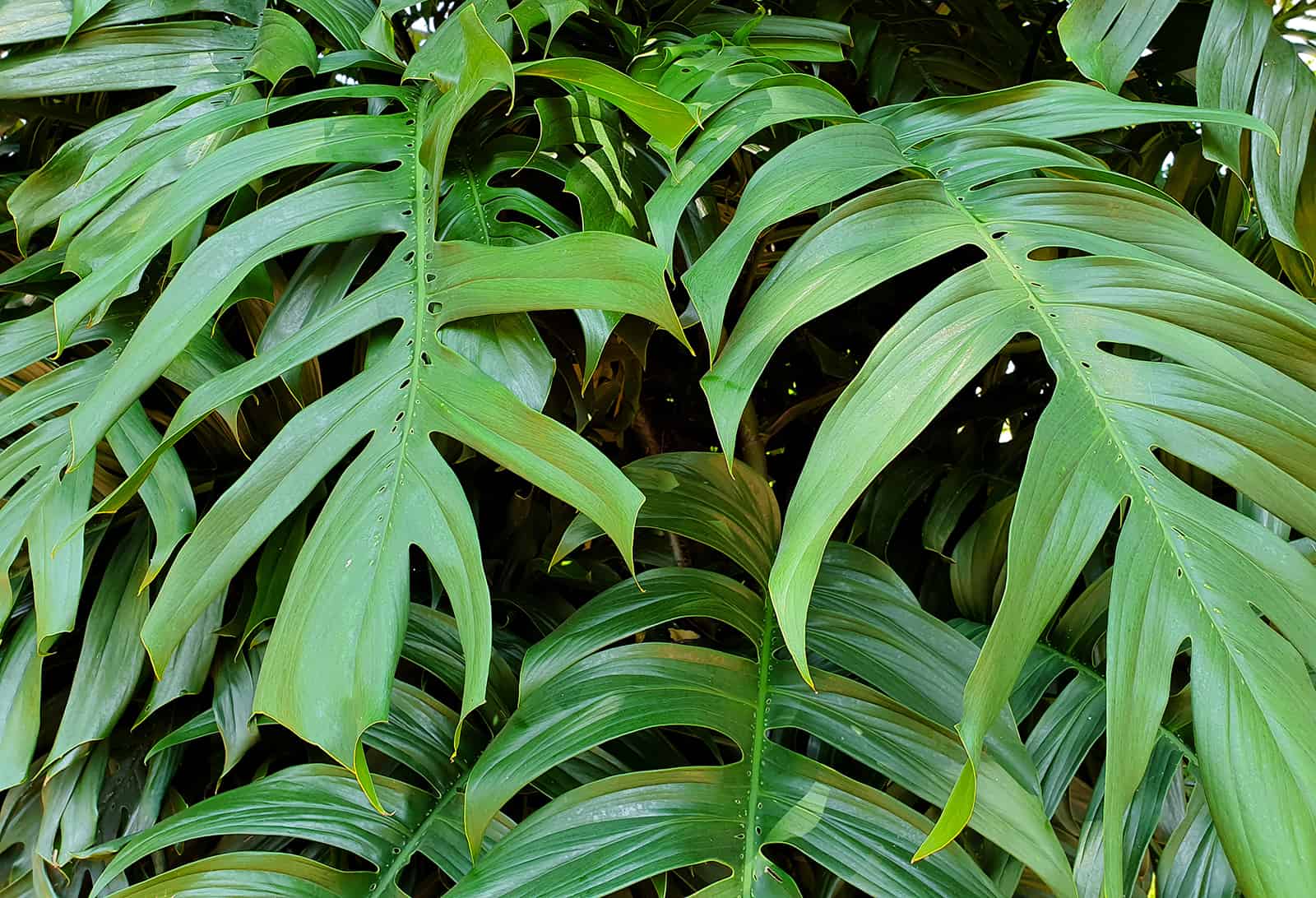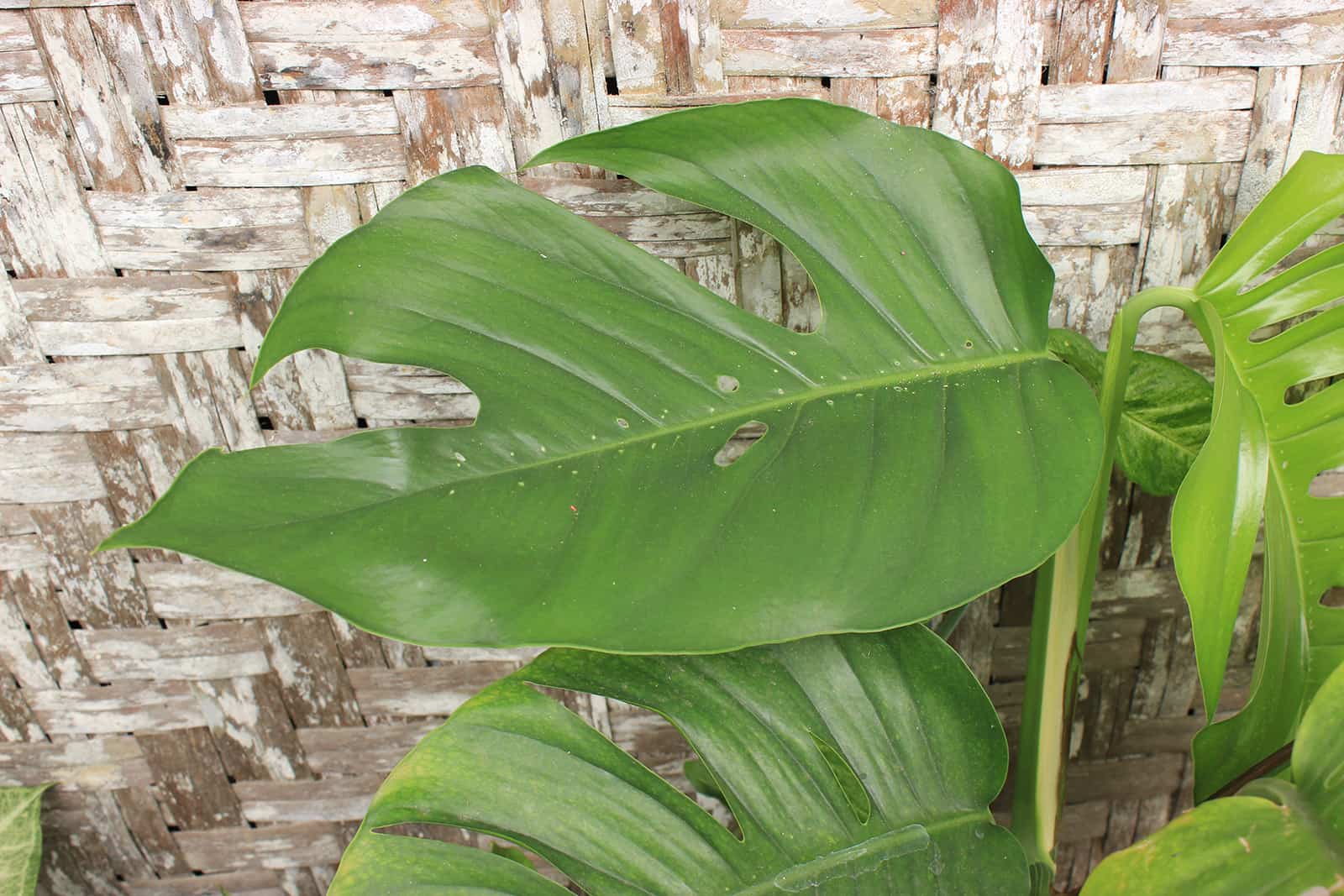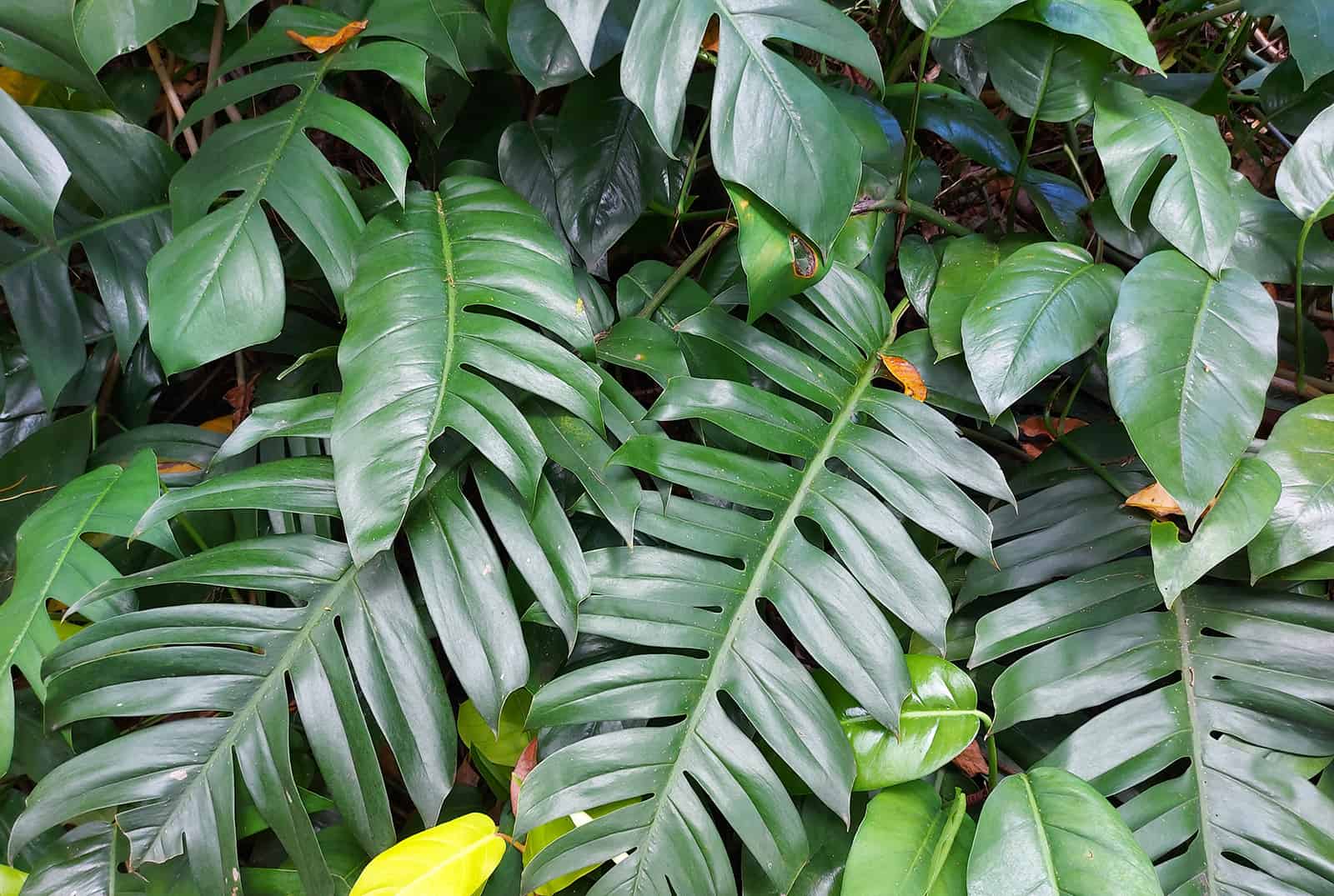The mere name Dragon Tail plant instills a sense of unease, but once you get to know it, you’ll realize that there’s nothing to be afraid of!
This aroid brings the exotic nature of tropical rainforests into your home, and will leave people awestruck after gazing upon it.
Let’s look at some basic information before we continue:
[table id=106 /]
This article has a complete care guide for this plant that anyone can follow, and you’ll be happy to hear that the Dragon Tail plant is incredibly easy to maintain.
You will also be able to extend your knowledge of this plant by learning more about its appearance, origin, and benefits.
You’ll see that this plant is not just easy on the eye, but also quite practical!
But let’s not linger here; the care guide awaits!
Dragon Tail Plant Care Guide
An easy-care indoor plant like the Dragon Tail is perfect for beginners, and we’re here to help you look after it.
This plant is a gift that keeps on giving, and the best part is that you don’t have to spend a lot of time caring for it.
Keep it in a bright spot, don’t overwater it, plant it in a well-draining substrate, and that’s it!
However, these are just the basic needs, and in the following sections we will discuss each of them in more detail so you can provide the best plant care possible.
Light Exposure
The Dragon Tail plant requires bright indirect light, but it can also thrive in moderate light conditions.
There are two things you should avoid when it comes to lighting: low-light levels and direct sunlight.
This plant can survive in low light conditions, but it will get disfigured if kept in the shade. Its growth will slow down, the spacing between leaves will get larger, and some stems may be left without any leaves at all.
Direct sunlight is on the other end of the spectrum, and it is equally dangerous. The afternoon sun is too hot for this delicate plant and can burn its foliage. This means you should place your stunning Dragon Tail plant in a bright spot without direct sunlight.
There isn’t much of a difference between south, west, or east-facing rooms as you have to keep your plants away from the windows regardless.
However, the morning sun is less dangerous and has a lower chance of burning a plant, so we always prefer east-facing rooms.
But any well-lit room is ideal, and if you don’t have a room that can provide four to six hours of filtered sunlight a day, you can always invest in some grow lights.
I hear they work like a charm!
Water And Humidity
Using the correct watering technique is just as important as light exposure. Overwatering leads to many issues, with the most severe being root rot.
If you want to avoid any potential issues, you should adjust your watering technique.
The first thing you need to look out for is the dryness of the soil. Always wait until the topsoil is dry. However, this doesn’t mean that you can just look at it or touch the surface of the soil to know what’s going on!
You need to get your hands dirty and put your finger in the soil. If the first few inches of the soil are dry, you should water the Dragon Tail, but if the topsoil is still moist, wait a day or two and then come back to recheck it.
The second most important thing is the amount of water you use for irrigation. The plant doesn’t need too much water, but you should still ensure that all the potting mix is moist.
Water the plant slowly, and stop when you notice that the water has started to drain through the holes at the bottom.
Humidity
Now you have put so much effort into getting the correct watering and light conditions, it’s important to adjust the humidity levels around your plant to suit its needs.
The Dragon Tail needs moderate humidity, and anything between (or slightly above) 50-60% is ideal. However, room humidity is usually around 30-40%, which is often too low for this plant.
This means you should find some ways to increase your home’s humidity levels.
Fear not! We have four simple ways of raising humidity levels for you to try!
Spray the plant with water. Spraying the plant with water from time to time is the easiest way to increase humidity.
The only thing you need to look out for is fungal diseases, which develop if you mist your plants too often. However, misting three times a week gives the foliage time to dry so you can rest assured that your plant is safe.
Use pebble trays. Everyone knows that we love pebble trays here! Fill a tray with pebbles and water, put your potted plant on top of it, and your work is done!
The pebbles will keep the roots away from the water, and the evaporation will humidify the air and hydrate the plant.
Invest in a humidifier. Using a humidifier is a pricier method, but it works really well. You simply need to turn it on and go on about your day.
All that worrying about whether you’re doing the right thing will disappear, and you can actually relax around your plant, which is one of the main reasons we buy them in the first place!
Put the plant in a humid room. Moving this tropical plant to a kitchen or bathroom has proven to be quite an effective method for increasing humidity.
There’s a Dragon Tail plant in my kitchen right now, and I can’t imagine cooking without it!
Temperature
Another essential factor of our care guide is maintaining the right temperature. This plant flourishes at room temperatures, so we ensure that the thermostat is always set between 65 and 80°F (15-27°C).
This delicate flower cannot handle extreme temperatures, which is why we don’t grow it outside where we cannot control the weather.
Also, you don’t want to expose it to draft as it dries the air and lowers humidity, so you should keep this plant away from drafty windows and AC.
Soil And Fertilizer
This is a low-maintenance plant, but that doesn’t mean you can just put it in whatever mix you have at home and hope for it to be healthy.
The Dragon Tail thrives in acidic soils with a pH between 5.1 and 6.5, but this is not the only requirement.
You need to ensure that the planting medium is well-draining and has good aeration because these factors reduce the risk of root rot tremendously.
You can get store-bought aroid potting mix or make your own. You just need to add vermiculite, perlite, and peat moss to your favorite potting soil.
Vermiculite and peat moss both improve moisture retention and perlite increases water drainage. You can also add orchid bark to make the mixture somewhat chunky and increase aeration.
You can also add some compost or Earthworm castings as they provide the plant with necessary nutrients, which means you won’t need to fertilize it as often.
We know that fertilization is often the trickiest aspect of plant care, so we have some helpful tips and tricks to help you feed your plants. Let’s take a look!
Fertilizer
The Dragon Tail plant doesn’t need fertilizer if you have enriched the soil with loam-based compost or another ingredient.
However, you can add fertilizers such as eco-aminogro or eco-seaweed once a month to help promote growth. It’s important to always dilute these fertilizers in water to reduce the risk of over-fertilization.
Whatever you do, don’t fertilize this plant in fall or winter, which is when it enters dormancy. Its active growing season is during spring and summer, and these are the only times it can use all the food you give it.
If you only repot your plant every one or two years, there’s no need for additional fertilization.
The fresh soil has all the nutrients and organic matter the plant needs.
Repotting
Speaking of repotting, the best time to repot is when this plant wakes up from its dormancy period.
Of course, you should increase the pot size, but don’t choose a container three or four sizes larger than the previous one.
Pots too large for the plant become filled with water that doesn’t drain, which makes your plant more susceptible to root rot.
Instead, choose a pot one or two sizes larger, fill it with a new and well-draining substrate, add some worm castings, and repot the plant.
The Dragon Tail is not an extremely fast grower, so you won’t have to repot it too often. Once a year is enough, though if it ever doubles in size, you should repot it as its growth slows down due to being rootbound.
Propagation
The easiest method of propagating this houseplant is by taking stem cuttings. You can propagate this climber in water or soil, and both techniques are perfect for beginner gardeners as they rarely fail.
You will learn about these two techniques in the following section, so try them both and decide which one suits you better.
Propagation In Water
Here’s a step-by-step guide to water propagation.
Don’t worry, it’s quite simple to get plenty of little dragons from just one plant.
Step 1. Water the plant thoroughly the night before propagating to reduce the risk of failed propagation.
Step 2. The next day, choose a healthy and hydrated stem 2-6 inches (5-15 cm) long with leaves on it. The cutting will mainly get energy from photosynthesis, and the foliage is crucial for this process.
Step 3. Next, remove the leaves at the bottom of the stem. Those leaves will not take part in photosynthesis and only rot in the water and contaminate it.
Step 4. Put the prepared cutting in a glass container filled with lukewarm water, then place it in a bright spot where it can get plenty of filtered sunlight.
Filtered water is recommended, however, if you’re using tap water you should let it sit in the air for a day or two so the chlorine can evaporate.
Step 5. Mist the leaves once or twice a week to increase humidity, or alternatively use a humidifier.
Step 6. Change the water 2-3 times a week and wait until you notice new roots developing.
Step 7. After you notice transparent roots, wait until they’re at least 1 inch (2.5 cm) long. Ideally, you should wait until they’re about 4 inches (10 cm) long to transplant.
Step 8. Choose a small pot and fill it with a well-draining medium. You can add coco coir to improve drainage so your new plant doesn’t get root rot.
Transplant your new Dragon Tail and place it somewhere it can get at least four hours of indirect sunlight a day.
Propagation In Soil
People always say that soil propagation is risky because bacteria in the soil can infect the cutting and destroy it.
However, the cuttings are more resistant than you might think, and if you follow all the steps you should have a new plant growing young leaves in less than two months.
Step 1. Always water the plant before propagation to make it and the cutting more resistant to transplant shock.
Step 2. Fill a nursery tray with a moist, well-draining substrate and plant the stem in the middle.
Step 3. Add more soil to keep the plant upright, then gently press it down so you don’t harm the plant.
Step 4. Put a plastic sheet or other cover over the tray to increase humidity. This method means you don’t have to water the plant so often.
Step 5. Place the tray in a spot with filtered sunlight or under grow lights, then wait for the roots to develop.
Step 6. Transplant the new Dragon Tail into a nursery pot once the root system has developed, give it some compost to improve fertility, keep it in a bright spot, and don’t forget about its watering needs.
Pro tip: You’ll know the roots have developed once you notice new growth. Another trick that can help you is to slightly pull the plant, and if you feel like it can’t come out, it means that the roots have grown and you can transplant it.
Here are some tips to ensure you successfully propagate your dragon tail plant in soil.
Cleaning And Pruning
Cleaning the Dragon Tail plant is not something you should take lightly. Dust doesn’t just look unappealing, it may also hurt the plant because it reduces the viable surface for photosynthesis.
Cleaning plants is extremely simple: you just need to wipe the foliage with a damp cloth.
You should also dry the leaves afterward, as wet leaves can cause leaf spots. There is something you can do to avoid both leaf spot and drying the leaves.
Make cleaning the foliage with a wet cloth your way of humidifying the plant. This way, you don’t have to increase humidity some other way or worry about drying the foliage, and you can forget about leaf spot.
Pruning
Pruning can be considered a part of cleaning the plant. You need to remove all dead foliage as they no longer fulfill their purpose. The leaves are supposed to make energy and food through photosynthesis, not waste it!
Also, if you notice leaf spot or powdery mildew on top of the foliage, you should prune those leaves as the disease will only spread and infect other leaves and plants.
Finally, pruning the plant allows you to maintain the shape that you like, and it can even make it bushier and grow faster.
However, always prune plants with sterilized shears or scissors because unsterilized equipment usually contains bacteria and microorganisms that may hurt your plant.
Common Pests And Diseases
The Dragon Tail is unfortunately not immune to infections and pest attacks. However, both issues can be avoided and successfully treated relatively easily, so there’s no need to despair!
In this section, you’ll learn about the most common diseases and pests that attack this plant, and how to treat them.
Pests
The most common pests that attack all houseplants, including this one, are aphids, mites, and mealybugs.
You can get rid of them by removing them one by one if the infestation isn’t significant.
However, for larger groups, you should consider spraying the plant with insecticides like neem oil.
They are proven to get rid of all bugs without hurting your plant.
Always remember to separate infested plants from your other plants so they don’t spread.
Diseases
This plant is pretty resistant to disease, but overwatering can lead to root rot.
Root rot is a vicious fungal disease that can kill your plant, but you can save it if you catch it in time.
As soon as you notice stunted growth, withering, or yellow foliage, you should check the plant’s roots.
Remove the dirt around them and look for mushy brown or black roots. Cut all unhealthy roots away and repot the plant in a new pot with a fresh and well-draining medium.
If you remember to only water the Dragon Tail when the topsoil is dry, you’ll avoid overwatering for sure.
Features Of The Dragon Tail Plant
You know quite a lot about this plant now, but it’s also important to learn about its growing habits and the way its foliage looks and behaves.
This section contains the main features of the Dragon Tail, which may give you an incentive to grow even more of these beautiful climbers.
Stem
The Dragon Tail is a climbing plant that can reach a height of up to 3 feet (90 cm) if you stake it properly.
This climber uses aerial roots to climb up the stake, moss pole, or trellis you have set up for it. You can also use some alternatives to moss poles and enjoy the company of a majestic dragon.
However, we love to grow these plants in hanging baskets as they add a certain depth to the space around them.
Foliage
This climbing plant is evergreen, and its leaves remain a gorgeous dark green hue throughout the year.
Young and mature leaves differ in shape. Young leaves are usually oval and somewhat pointed, so they look like arrows.
However, the lobes start to appear over time and the young foliage will begin to look a lot like serrated mature leaves.
It’s not just the shape that changes, but also the texture. Mature leaves lose their smooth texture and become leathery. The leaves are between 8 and 20 inches (20-50 cm).
Flowers
The Dragon Tail plant also produces flowers, but they are not particularly special.
They usually appear in summer, and the inflorescence, which consists of spathe and spadix, is green-white.
You will normally only see the flower when it’s in its natural habitat, where the growing conditions are perfect. It rarely blooms indoors, but that shouldn’t depress you as you have the leaves to enjoy!
Other Common Facts
Let’s now look at some historical facts about this plant, as well as its benefits. We also thought it would be a good idea to remind you that this plant is poisonous, so we will also discuss the dangers to be safe.
Name, Origin, And Background
The Dragon Tail plant belongs to the Araceae family, and it’s primarily found in the Philippines and other Southeast Asian countries.
It’s also known as Tonga Vine, and Filipinos refer to it as the Tibatib plant. It resembles monstera and pothos, which is why it often gets mixed up with its cousin, the Scindapsus pictus (Satin pothos), which used to belong to the same genus and was called Epipremnum pictum Argyraeum.
Same Name, Different Plant
The Dragon Tail is a name that two plants share, but they belong to two different genera.
The Rhaphidophora decursiva is also called the Dragon Tail, but it shouldn’t be mistaken for our Epipremnum pinnatum.
If you compare these two plants, you’ll notice that the R. decursiva has extremely dark green leaves that are massive compared to the E. pinnatum.
Benefits
The Dragon Tail is an air purifier, which I’m sure you’ll be delighted to hear. It has the ability to filter toxins from the air, including toluene, benzene, and formaldehyde, to create a healthier environment.
If you get several varieties of Epipremnum or Philodendron genera, you will have a nice indoor jungle that will also purify the air you breathe.
Toxicity
Unfortunately, this plant is toxic to humans and pets. Its sap can irritate the skin, and if ingested can cause swelling and burning of the lips, mouth, tongue, and throat.
It can also cause nausea, vomiting, and excessive drooling in animals.
Even though it’s highly unlikely that this plant causes severe damage, you should still contact your doctor or a vet if you or your pet ingest it.
FAQ
There is still even more to discover about the Dragon Tail plant.
We have saved the most exciting facts for last in the answers to your most frequently asked questions.
Is the Dragon Tail plant rare?
The Dragon Tail is not a rare plant. Even though it only naturally occurs in tropical parts of Australia and Southeast Asia, you can find it in many homes around the world.
Collectors of rainforest plants love it, and you can find it online for approximately $40.
Why is it called the Dragon Tail plant?
The Dragon Tail got its name based on its leaves, which look like spikes or notches on the tail of a dragon.
It is also called Centipede Tongavine due to its climbing ability.
Is the Dragon Tail a philodendron?
No, the Dragon Tail is not a philodendron plant. They belong to two completely different genera.
The Dragon Tail plant is a member of the genus Epipremnum, whereas philodendrons belong to the Philodendron genus.
Conclusion
The Dragon Tail plant is truly a king among rainforest plants. It is a climber that you can grow around stakes or in hanging baskets.
It is a low-maintenance plant that only requires bright indirect light, a bit of water when the topsoil is dry, and a well-draining potting mix in order to thrive.
You also know its common names and the other variety it shares its name with. This will help you choose the correct plant for your personal space.
This plant’s ability to purify air makes it especially desirable!
Have a blast growing this fantastic variety, and until next time!
Like this post? Share or pin it for later!

